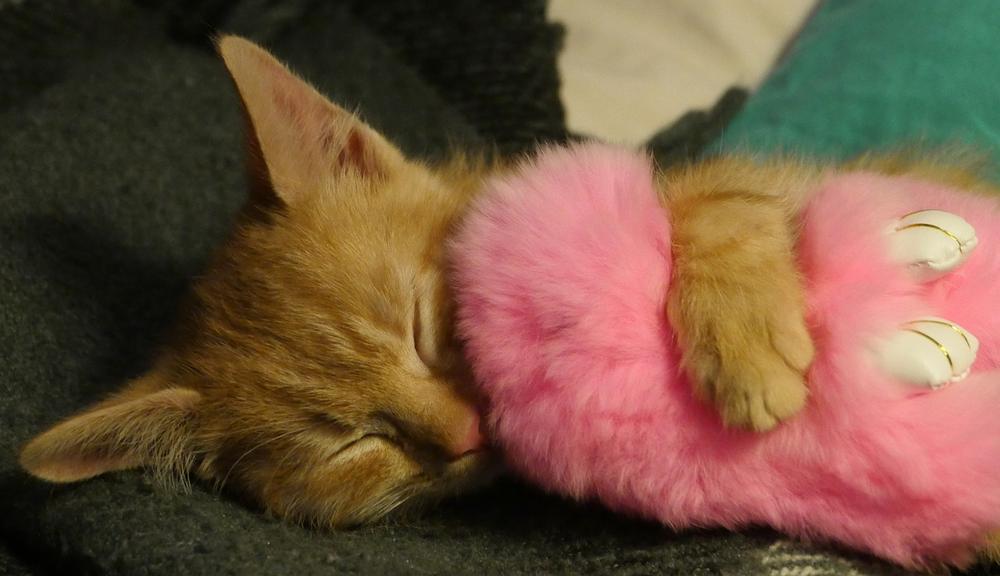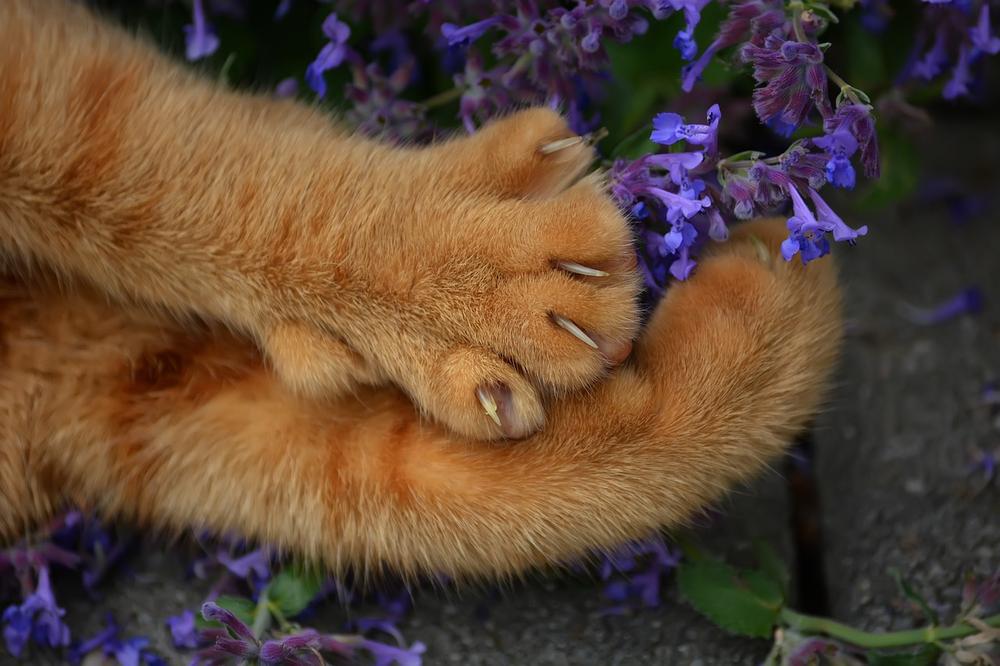Should You Adopt a Declawed Cat? The Good and the Bad

..
Are you sitting on the fence, pondering the idea of adopting a declawed cat? 😺
Wondering about the consequences of such a decision?
Well, let's dive right into it and clear those uncertainties, shall we?
The Pros and Cons of Declawing Cats
Declawing cats is a topic that has its ups and downs, so let's break it down for you.
First, the positive side:
- It keeps your furniture, cords, and carpets safe from potential damage. You know how expensive replacements or repairs can get.
- You don't have to worry about scratches or injuries to humans, especially if there are kids around or someone with a weak immune system.
- Cat-related allergies could be minimized since the source of allergens in cat claws would be eliminated.
- Finding homes for cats becomes easier because some people may have concerns about their precious belongings being ruined.
Now, onto the negative aspects:
- Once declawed, cats lose their main defense mechanism, making them more vulnerable in fights against other animals.
- The procedure itself causes pain for the cats and opens the door to complications like infection and behavior problems.
- Cats sans claws may develop behavioral issues such as biting, avoiding the litter box, and becoming more aggressive.
- Declawing is simply against a cat's natural instincts and nature, causing harm both physically and psychologically.
Taking all this into account, it's best to consider humane alternatives like regular nail trims and using nail caps.

These options will safeguard your cat's happiness without sacrificing your belongings.
Ultimately, your top priority should always be the well-being and health of our feline companions.
Main points I'll expand upon further down this article:
- Declawing is a traumatic and dangerous surgery that involves amputating parts of a cat's toes.
- Declawing should be done before the cat is 6 months old.
- The surgery carries risks related to anesthesia and the procedure itself.
- Alternative options to declawing include using caps that fall off naturally.
- Declawing can have negative effects on cats, including pain, swelling, and inflammation.
- Cats that have been declawed may have decreased coordination and muscle weakness.
- Declawing can strip cats of their defense mechanism and grace.
- Some declawed cats may still engage in scratching behaviors, but it is often less frequent.
- Declawed cats may exhibit behavioral changes, such as nervousness and irritability.
- Caring for a declawed cat requires adjustments, including keeping them indoors and providing scratching alternatives.
But let me tell you, the process of declawing is far from a simple solution.
It involves amputating ten separate parts of a cat's paws, causing significant pain and inflammation.
Understanding the Declawing Procedure
Declawing cats is a risky procedure that resembles cutting off the last knuckle of their fingers.
It's an operation surrounded by pain and inflammation, which you should be aware of.
The use of anesthesia and the surgery itself come with their own set of dangers. Therefore, you should understand the associated risks before considering declawing your cat. To reduce potential complications, it is suggested to declaw cats before they reach 6 months old.
On top of that, when trimming their claws, you must exercise caution not to harm the sensitive quick, as this can cause pain and bleeding. Instead of declawing, there's a more humane alternative - using caps that naturally fall off as time goes by.
The Physical Effects of Declawing on Cats
Declawing cats can really mess them up.
Here's what it can do to those poor felines:
- They lose their balance and agility because their claw mechanism gets messed up, making it harder for them to get around.
- The surgery itself is brutal, causing tons of pain, swelling, and inflammation in their paws.
- And if the procedure isn't done right, their claws can grow back, making things even worse for them.
- It messes with their coordination too, so climbing, jumping, and walking become major challenges. They're more likely to take some nasty falls.
- Not having retractable claws not only screws up their self-defense but also takes away their grace and nimbleness.
- Some declawed cats still try to scratch stuff, but they do it less often and not as vigorously.
- There can be chronic issues like infections or tiny bits of bone left behind after the declawing is done.
- Without their claws, they can't fight off predators, which leads to all sorts of health and behavioral problems down the line.
So, before you decide to declaw your cat, think long and hard about these physical consequences. Look into other ways to deal with their scratching habits instead. 😿

But the physical effects of declawing on cats are not the only concerns.
After the surgery, there may be a whole new set of behavioral changes and challenges that you, as a cat owner, need to be aware of.
Let's dive into what happens to these cats postdeclawing and how it can impact their all in all well-being...
The Emotional Impact of Declawing on Cats
Cats can experience significant physical and emotional consequences when they lose their claws.
The behavior of declawed cats often undergoes noticeable changes, raising concerns for their owners.
One common response to declawing is an increase in anxiety or fearfulness, which can make them more nervous, irritable, and difficult to handle.
Without their claws, they may feel vulnerable and stressed, as if their protective shield has been taken away.
In fact, declawing can have a profound effect on their temperament, rendering them more anxious and fearful compared to cats with intact claws.
Consequently, they may struggle to deal with stressors in a calm manner and exhibit heightened vocalization as a means of expressing discomfort or agitation.
Furthermore, declawed cats tend to become more dependent on constant human company, seeking reassurance that they are safe and protected.
Although rare, some declawed cats may develop behavioral issues such as excessive scratching and biting due to the surgery itself.
With their claws gone, they resort to aggressive actions as a substitute for self-defense. You should acknowledge that declawing raises ethical and legal concerns, leading to its prohibition or condemnation in numerous countries. While it should be noted that declawing generally doesn't cause cats to urinate outside the litter box unless they already had a habit of urine marking. You have to recognize that each cat's response to declawing can differ from others within the same household.
Therefore, closely observing and understanding how declawing affects your individual feline companion is essential.
In conclusion, it is essential to be aware of the emotional impact that declawing can have on cats.
As I mentioned before, cats may become anxious, fearful, and more dependent on human company.
However, when it comes to dealing with biting behavior in teething kittens, there are effective strategies that you can learn.
If you want to find information and tips on how to handle a teething kitten's biting behavior, I highly recommend checking out my article, Do Kittens Bite When Teething.
Tips for Caring for a Declawed Cat
When taking care of a cat that has been declawed, you need to make some changes in their life after the surgery.

Here are some tips to help you give them the best care possible:
- Give them tall and sturdy scratching posts so they can scratch without damaging your furniture.
- If you have other pets, introduce them carefully to your declawed cat because they might not have as much defense now.
- Keep your cat indoors 🐾 because without claws, they are more susceptible to predators.
- Even though they don't have claws anymore, they can still enjoy playing and cuddling with you.
- Watch out for potential problems with the litter box. Changes in how their paws interact with surfaces may cause issues, so pay attention to their behavior and make necessary adjustments.
- Interactive toys and playtime can help encourage proper scratching behavior and keep them mentally stimulated.
- Regularly trim your cat's nails to prevent any furniture scratching. Start this practice early with kittens and be gentle when handling an older cat's feet.
It is possible to properly care for your cat after it has been declawed, while also reducing any potential challenges.
And that wraps up today's article.
Thank you for reaching the end of my blog post! I'm curious, did you enjoy it? I truly put all my effort into creating comprehensive and helpful blog posts. It takes a significant amount of my time (but in a rewarding way). If you would be so kind as to click on any of the social sharing icons to share this blog post with others, it would mean the world to me. Thank you so much!
Talk soon,
-Sarah Davis